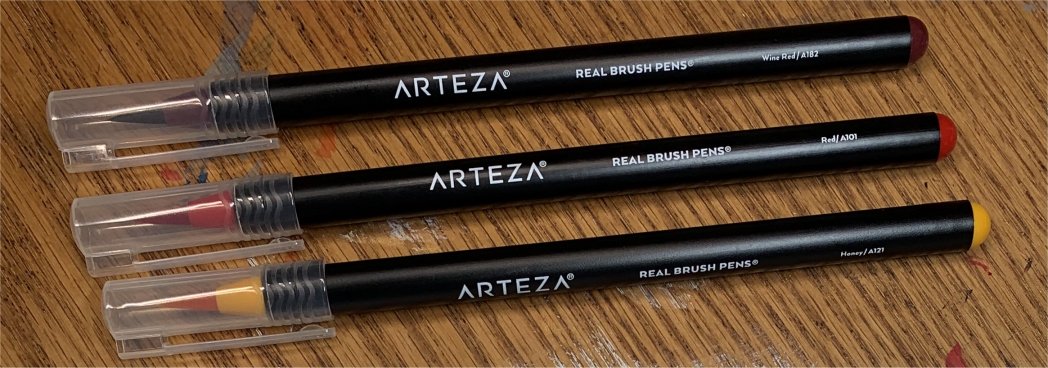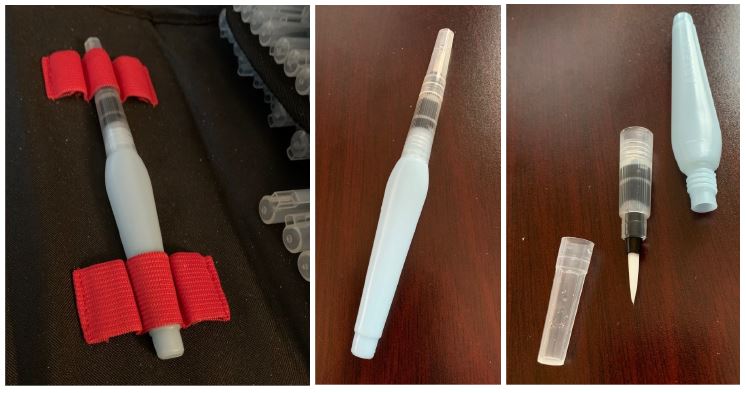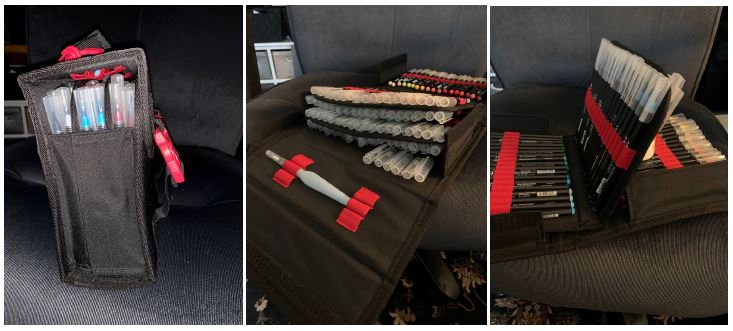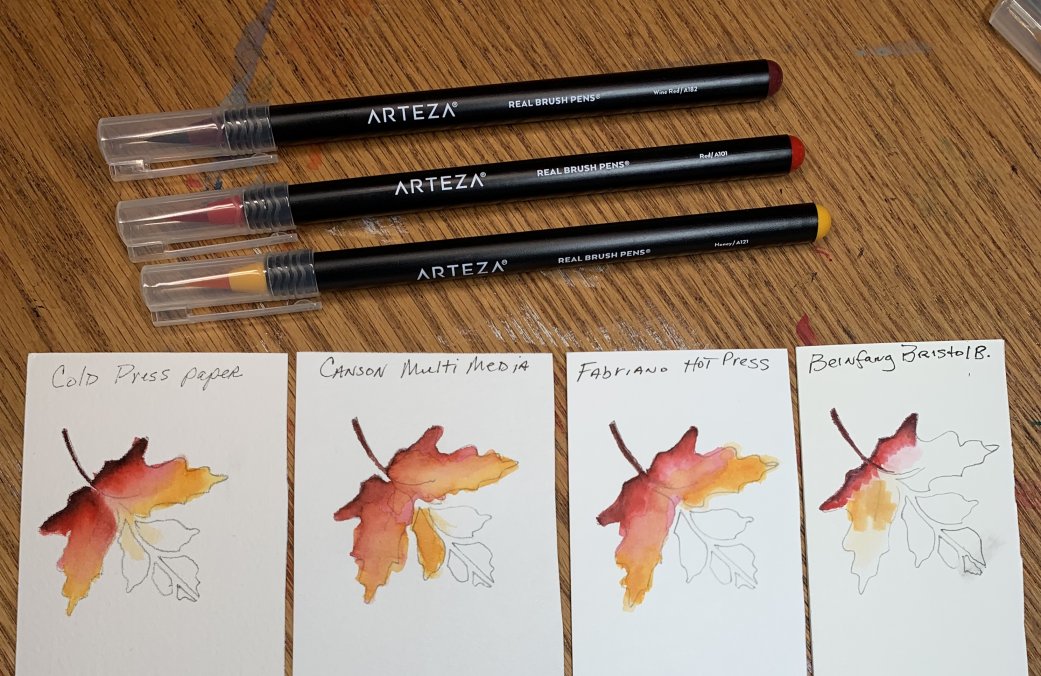Watercolor Pens
Watercolor pens are basically water-soluble markers with a brush nib. They are also called watercolor brush pens. These are not alcohol-ink brush markers like the Copic brand. These are filled with water-based pigmented or dye-based inks.
The
difference in the ink type is important if you are concerned about the permanency of
your art.
 Watercolor pens
Watercolor pensDye-based inks fade very quickly under normal light conditions unless they are protected in some way. Pigment-based inks last longer, so if this feature concerns you, keep that in mind when you are choosing a brand. The Winsor and Newton brand of watercolor brush markers use pigment-based inks.
What's in a name...
When I first learned about watercolor brush pens, I got them confused with another product called a “water brush.“
Part of the confusion came about because when searching for “watercolor brush pens” on Amazon or Blick, you get both products and a whole bunch of others in your search results.
But once I took a closer look, it became clear that “water
brushes” are just empty marker bodies with a brush nib. You fill it with water and then use it as a
brush for blending on the paper. You can also fill it with diluted watercolor
paint or ink and use it as a brush.
 A Waterbrush
A WaterbrushSome of the watercolor pen manufacturers, such as Arteza,
call their ink filled products “Real Brush Pens” which is better, I
suppose.
Real Watercolor Pens
Watercolor pens are made by many companies, and there are some important differences in the performance and useable features.
The ColorIt and Tombow brand pens are popular with calligraphy buffs because they have blunter, tougher nibs and a looser ink flow which makes it easier to create lettering.
The Zig and Arteza brands have a very fine, very soft tip which is not great for lettering, or, in my opinion, for controlling where the color goes. I suppose over time, you learn to use them with a very soft touch.
The pens are offered in single colors, small or large sets, depending on the brand. For instance, the Arteza brand comes in large 48 and 96 color sets, and have cool inclusions
like a traveling case or a water brush for blending. I have a set of the Arteza
pens (gifted to me by my lovely friend Johanna) and have been teaching myself
how to use them.
 Arteza Watercolor Brush Pen set
Arteza Watercolor Brush Pen setColor Strength and Marker Duration
One thing to note about color strength when using watercolor pens. These markers lay out colors at full strength. You can dilute it with water and blend them just like watercolor paint. But be aware, there’s only a limited amount of paint in each marker, and on larger paintings, I'd bet it gets exhausted quickly.
But, not to
worry, the ColorIt brand offers a fix for that issue. Their markers can be refilled with
separately sold inks. However, for me, the
idea of having 24 pens and 24 bottles of refill ink sitting around doesn’t
appeal. Watercolor paint is a lot cheaper, and just as saturated right out of the tube or pan.
Watercolor Pens and Paper Choices
Another thing to note: the paper I use when working with
these markers makes a huge difference. I
did a test on four different kinds of paper I had laying around and here’s a
pic of the results:

- The multi-media paper seemed to perform the best with these ink-based markers. It must have some kind of coating on it that helps the ink stay on the surface so you can blend it.
- The cold press watercolor paper did somewhat well, probably because of the sizing on it. It did seem to show the dark color better.
- The Bristol board was useless, it just soaked up the ink, and no blending was possible.
- The hot press watercolor paper was a little better but the blends tended to get blooms and look messy.
- I remembered later that I had some translucent vellum, so I tried the markers on that, but it
was as useless for these markers as the Bristol board.
Using Watercolor Brush Pens: Pros and Cons
After using these for several weeks, these are what I see as the pros and cons. The pros include:
- Vibrant color straight out of the pen
- Fine tip nibs are great for details
- No water or mixing needed to lay down color immediately, so they would be great for doing art while traveling. If you also bring along a water brush, you have the water you would need to dilute colors and blend. Maybe that’s why these watercolor pens are popular with people who like to paint in the new adult-targeted coloring books.
The cons as I see it include:
- You are working with ink, instead of pigment-based paint, and that makes a difference in terms of final art longevity, color blending and paper choices.
- Some brands have pen nibs that are too soft for good control. I plan to try the ColorIt and Tombow pens at some point for this reason. Maybe after I sell a few more paintings.
- The ink just doesn’t seem to blend well unless the paper is
coated with something that allows the ink to pool on the surface. I’ve ordered some marker paper and will
report what I find after using that paper.
This artist in the video below mentions the paper issue too, and she has some great ideas on using these markers. Check out her many different blending techniques: